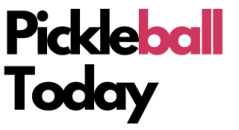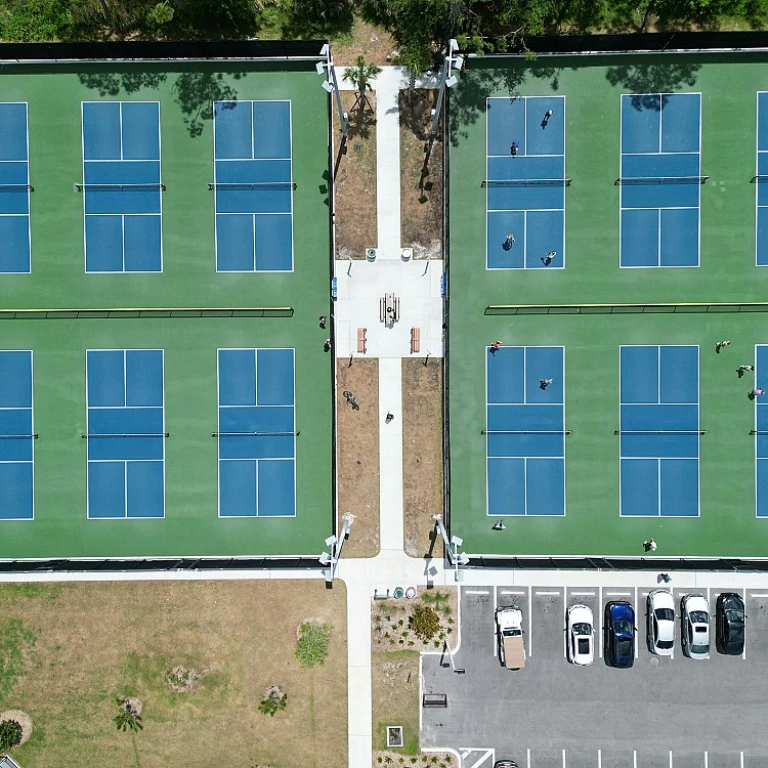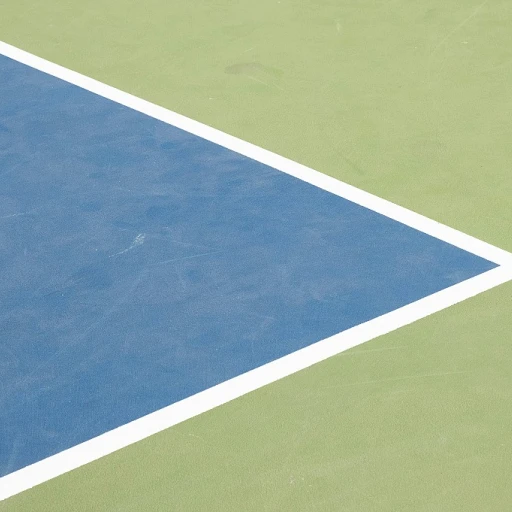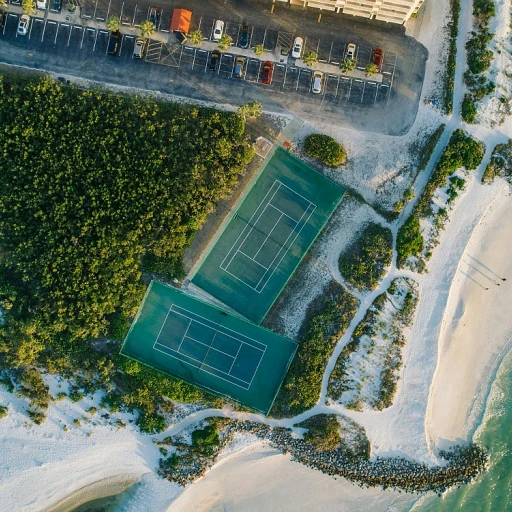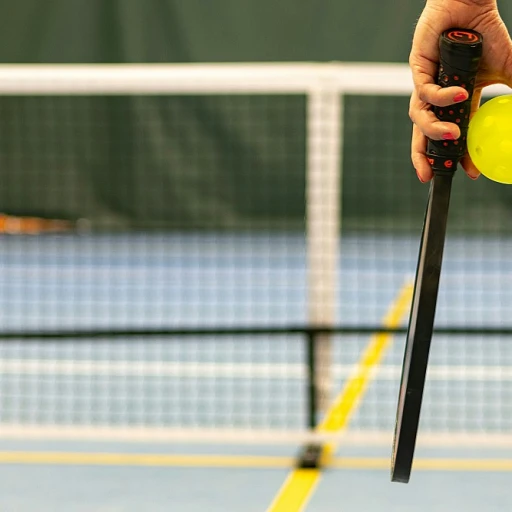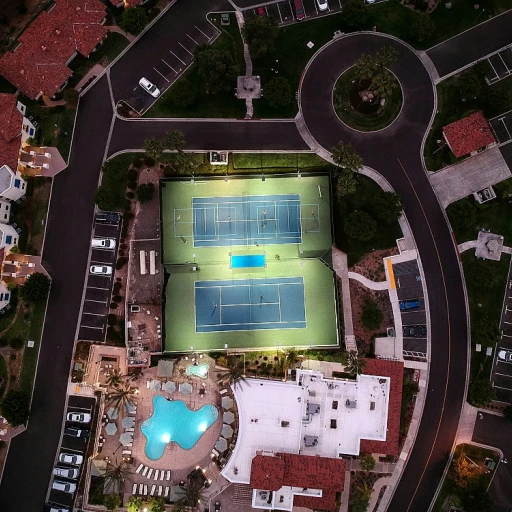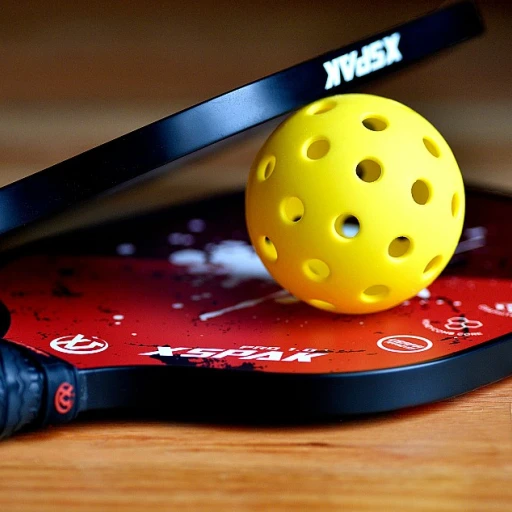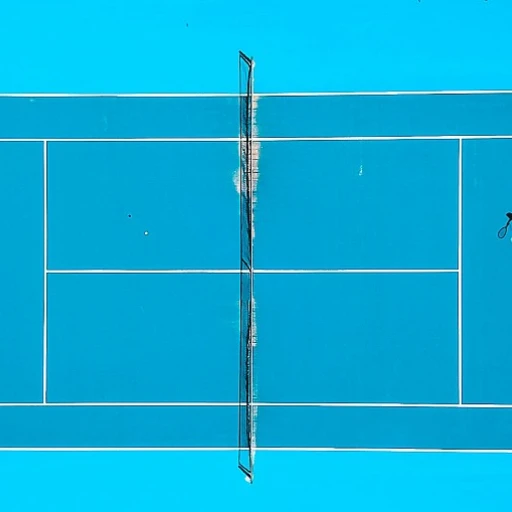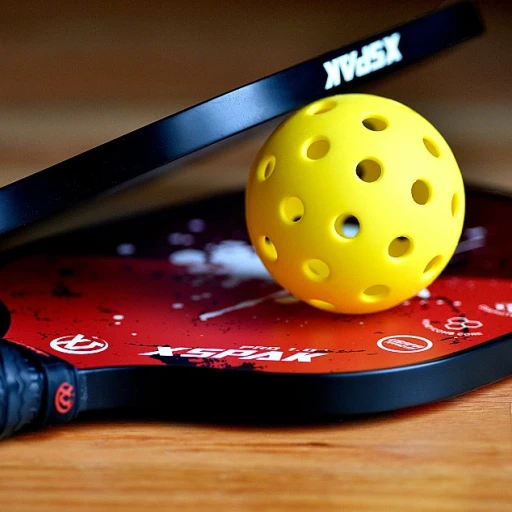
Understanding the basic rules of pickleball singles
Grasping the Fundamentals of Singles Play
Understanding the basic rules of pickleball singles is crucial for anyone looking to excel in this dynamic sport. While the core principles of pickleball remain consistent across singles and doubles, there are specific nuances in singles play that players must grasp to succeed.
In singles pickleball, the game is played on a standard pickleball court, but the strategies and movements differ significantly from doubles. The serve is a critical component, as it sets the tone for the rally. The server must serve diagonally, and the ball must land within the opponent's service court. The server's score determines the serve side; if the server's score is even, they serve from the right side, and if odd, from the left side.
One of the key rules to remember is the bounce rule. After the serve, the ball must bounce once on each side before players can engage in a volley. This rule applies to both singles and doubles pickleball, but in singles, it emphasizes the importance of positioning and anticipation.
Scoring in singles is straightforward: only the serving player can score points. The game continues until a player reaches 11 points, with a minimum lead of two points to win. This scoring system demands consistent focus and strategic play to outmaneuver the opponent.
For those looking to refine their serving techniques, exploring various serve strategies can provide a competitive edge. Mastering these strategies will not only enhance your opening play but also increase your chances of winning rallies.
As you delve deeper into the world of singles pickleball, understanding these foundational rules will set the stage for developing advanced strategies and avoiding common mistakes, which are crucial for achieving success on the court.
Key differences between singles and doubles play
Contrasting Elements in Singles and Doubles
When diving into the realm of singles pickleball, it is important to recognize how it contrasts with doubles play. Singles demand a heightened level of individual skill and agility compared to the coordinated efforts seen in doubles pickleball. While both formats require adherence to standard pickleball rules, understanding the key differences can significantly impact your game strategy and success.
In singles, one player must cover the entire pickleball court on their own. This leaves little room for error and requires impeccable footwork and speed to recover shots. As opposed to doubles, where two players share court responsibilities, singles places an emphasis on individual endurance and court coverage. This is where concepts like pickleball stacking and precision in movement can enhance your play.
The serve in singles is also approached differently. The server aims to strategically place the ball on the opponent's side court, forcing them to move. In doubles, players may rely on their partner for support, but in singles, the serve plays a vital role in setting the game’s pace and can gain critical leverage in points.
Another key difference lies in the scoring system and the importance of winning rallies. In singles, the focus remains on winning individual rallies and converting them into points to gain a lead. Unlike doubles, lacking a partner means you are directly responsible for both offensive and defensive moves. Knowing these distinctions can improve your chances of becoming a successful singles player by enhancing awareness and adaptability during each match.
Essential strategies for singles success
Strategies to Dominate the Singles Field
When playing singles pickleball, it's crucial to develop a strategic mindset to outsmart your opponent. The court may appear daunting with only one player per side, yet this presents an excellent opportunity to leverage tactics to your advantage. Here are some essential strategies to enhance your singles play:
1. Control the Serve Side: As the server, making strategic serves can shift the balance in your favor. Focus on placing the ball in difficult positions for your opponent, such as deep serves or targeting their weaker side. This can provide you the upper hand right from the start of the point.
2. Exploit the Volley Zone: In singles, the volley zone becomes your best ally if you can effectively control it. Take advantage of the no-volley zone by approaching the net after serving, and pressure your opponent by volleying balls away from their reach. Capitalize on this to dominate the short game and prevent your opponent from implementing their strategies.
3. Mastery of Court Coverage: The entire court is yours to cover, which might sound overwhelming compared to doubles. Use sharp angles and placement to keep your opponent moving from side to side, which can make it difficult for them to maintain their rhythm. Additionally, versatile lateral movement helps in managing the demanding coverage during the game.
4. Anticipate Opponent’s Moves: Predicting where your opponent will hit the next ball allows you to position yourself effectively on the court. This sharp foresight will enable you to redirect the game flow swiftly and catch your opponent off guard, making it challenging for them to maintain aggressive plays.
By strategically harnessing these tactics, your singles pickleball game can move to the next level. Remember that consistent practice and refinement of approach on the pickleball court are pivotal in nurturing these strategies to perfection.
Common mistakes in singles play and how to avoid them
Avoiding Missteps in Singles Pickleball
In the world of pickleball singles, errors can be the deciding factor between winning and losing. Understanding common pitfalls and how to sidestep them is crucial for enhancing performance on the pickleball court.
Faulty Serves and Positioning
One common mistake in singles play is poor serving. Unlike doubles, where a player can rely on their team to cover for a misstep, singles players have to be more precise and strategic. Ensuring your serve lands in the correct serve side of the court can prevent giving your opponent the advantage. Remember that the “bounce rule” applies, and the ball must bounce before it can be volleyed.
Failing to Capitalize on the Volley Zone
The volley zone, or "kitchen," is off-limits for volleying. Singles players who stray into this area risk losing their point. It's crucial to stay aware of your position on the court and only volley the ball when entirely outside the zone.
Ignoring Opponent's Weaknesses
Many players forget to analyze their opponent during play, missing chances to exploit weaknesses. Whether it's a slower reaction on one side of the court or a tendency to lob serves, identifying these can give you a tactical edge. Rallying to the left side consistently if it's your opponent's weak spot might score you critical points.
Lacking Consistency in Play
Consistency is key in singles pickleball. Players often change tactics too frequently, making it hard to establish a solid game plan. Sticking to one effective strategy that challenges your opponent while playing to your strengths usually wills the day. Practicing consistency can also ensure you react better to unexpected rallies and not rely solely on previous plays typically observed in doubles pickleball.
Understanding and overcoming these common mistakes not only improves your singles game but also builds a more successful overall pickleball career. For tips on avoiding these issues, training consistently and strategically is vital.
Training drills for improving singles performance
Drills to Elevate Your Singles Game
Improving your singles pickleball performance requires focused practice and targeted drills. Here are some effective training exercises to help you sharpen your skills on the pickleball court:- Serve and Return Practice: The serve is a critical component in singles play. Practice serving to different areas of the court, focusing on both power and placement. Follow up with return drills, aiming to place the ball deep into your opponent's side court to gain an advantage.
- Cross-Court Rally: Engage in cross-court rallies to improve your ability to control the ball and maintain a consistent volley. This drill helps enhance your accuracy and prepares you for the fast-paced exchanges typical in singles pickleball.
- Volley Zone Control: Work on your net game by practicing volleys within the volley zone. This drill focuses on quick reflexes and the ability to maintain control during rapid exchanges, a crucial skill in both singles and doubles pickleball.
- Skinny Singles: Play a modified version of singles, known as skinny singles, where you and your opponent only use half of the court. This variation helps improve precision and footwork, as you must cover a smaller area with greater efficiency.
- Footwork Drills: Effective footwork is essential for covering the court efficiently. Practice lateral movements and quick directional changes to ensure you're always in the best position to return the ball.
Equipment considerations for singles players
Choosing the Right Gear for Pickleball Singles
When stepping onto the pickleball court for singles play, the right equipment can make a noticeable difference in performance. Here’s what to consider:- Paddle Selection: A well-balanced paddle is crucial. It should offer a good balance between power and control. In singles, where precision and speed are key, some players prefer a slightly lighter paddle for quicker reactions.
- Shoes: Proper court shoes can provide the necessary grip and support, essential for the swift lateral movements often required in singles pickleball.
- Balls: While the same balls are used in both singles and doubles, ensure they are in good condition, meeting the pickleball rules for bounce. A ball with the right bounce can enhance serving and play strategies.
- Clothing: Wear comfortable, breathable clothing that allows full range of motion. Singles matches often involve more running, so moisture-wicking fabrics are beneficial.
- Eyewear: Protective eyewear is recommended to safeguard against accidental volleys and offers an additional layer of safety during intense rallies.
